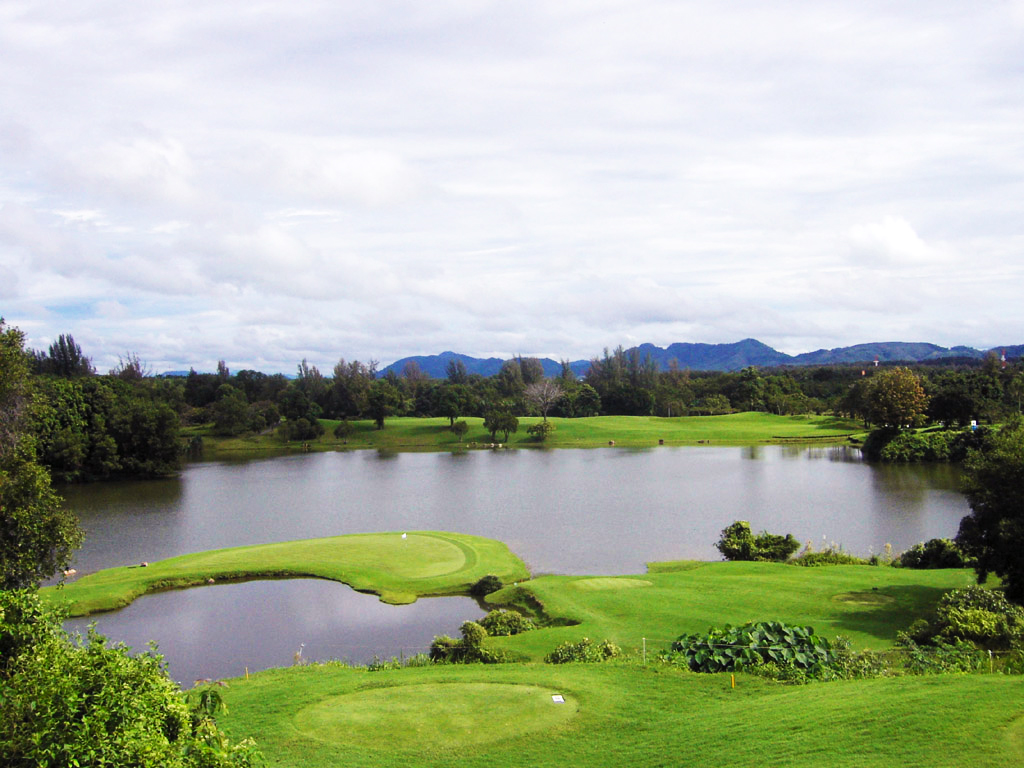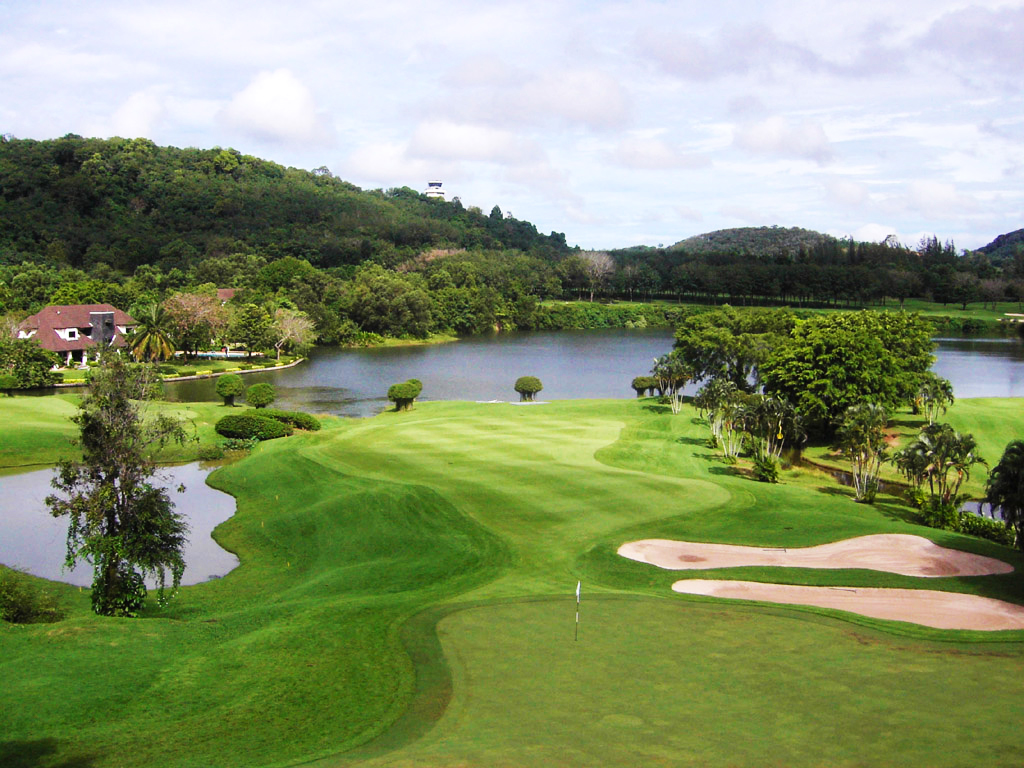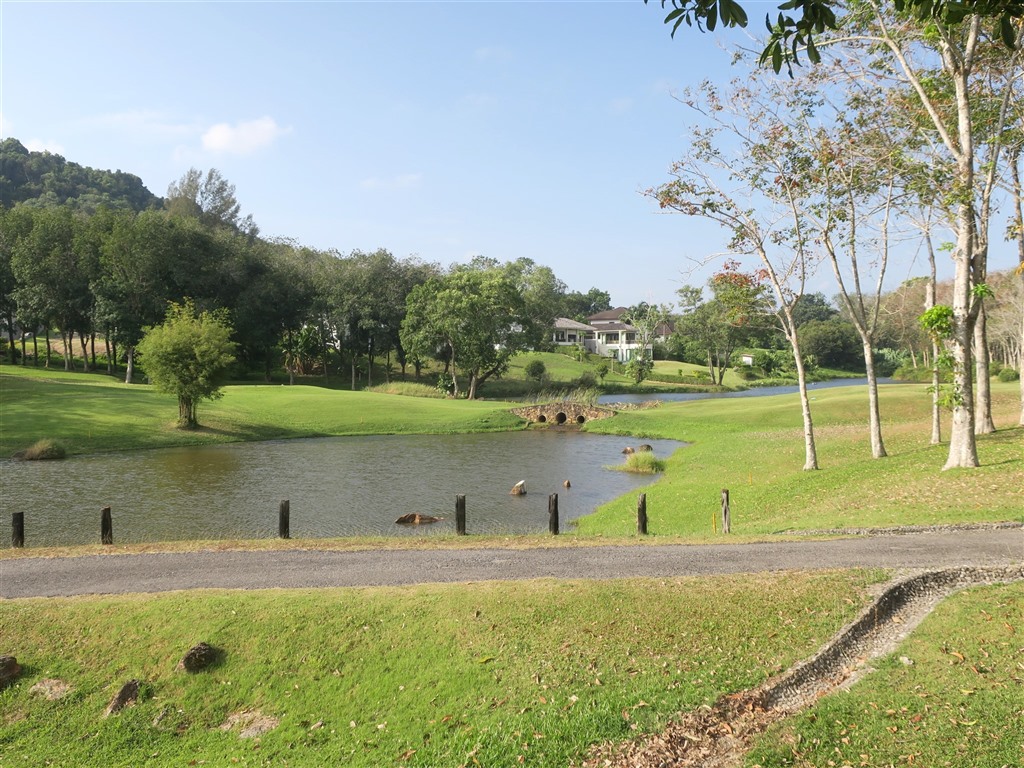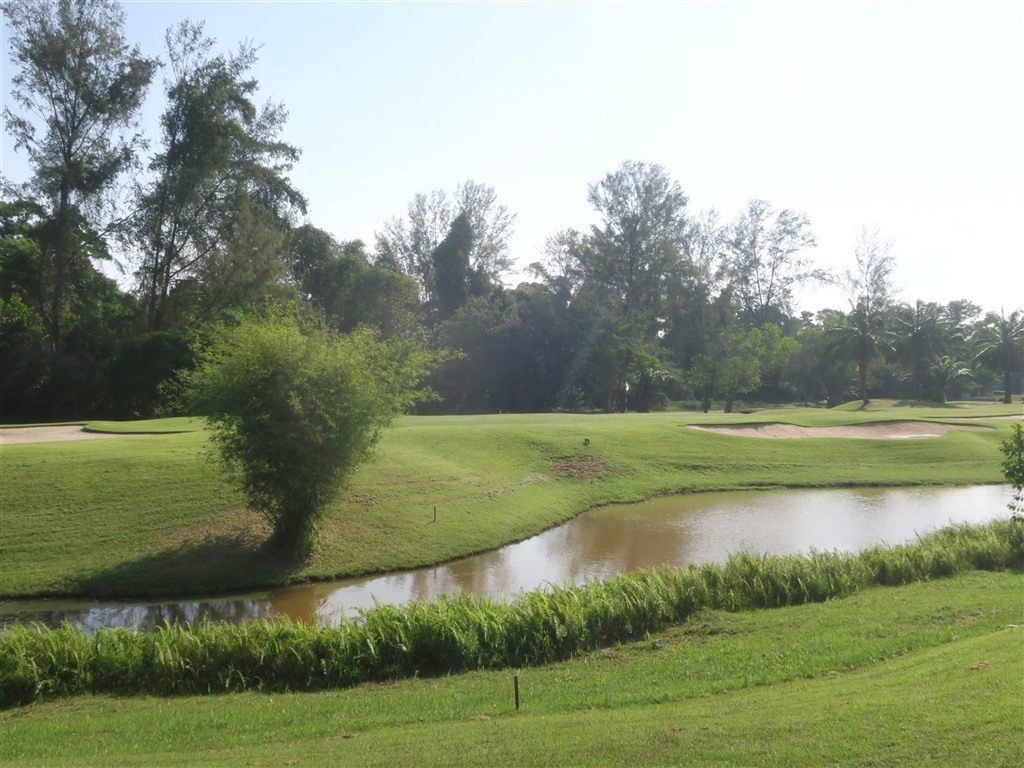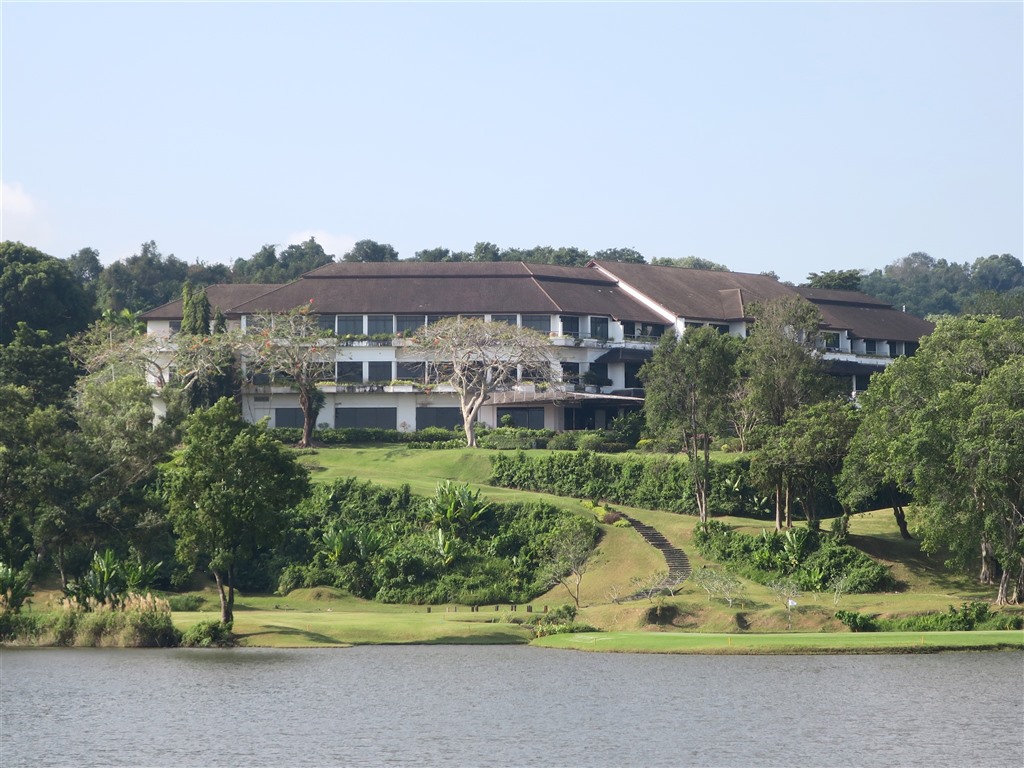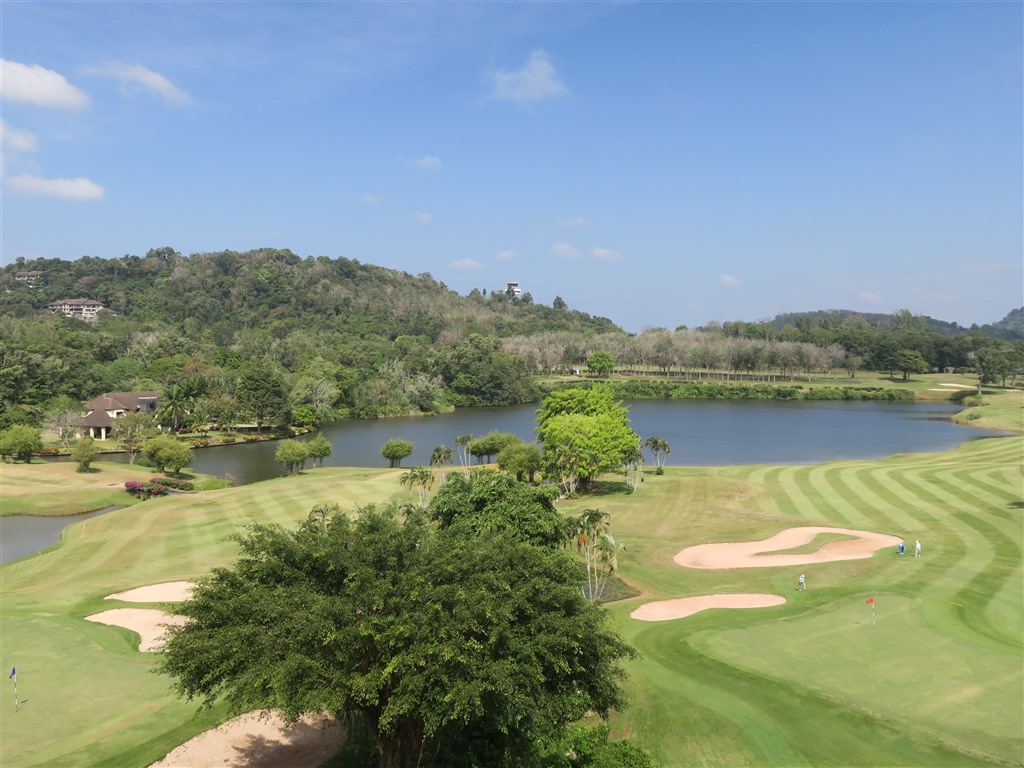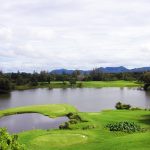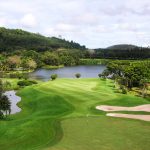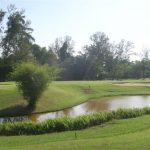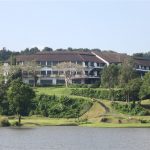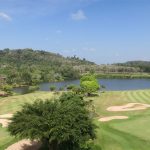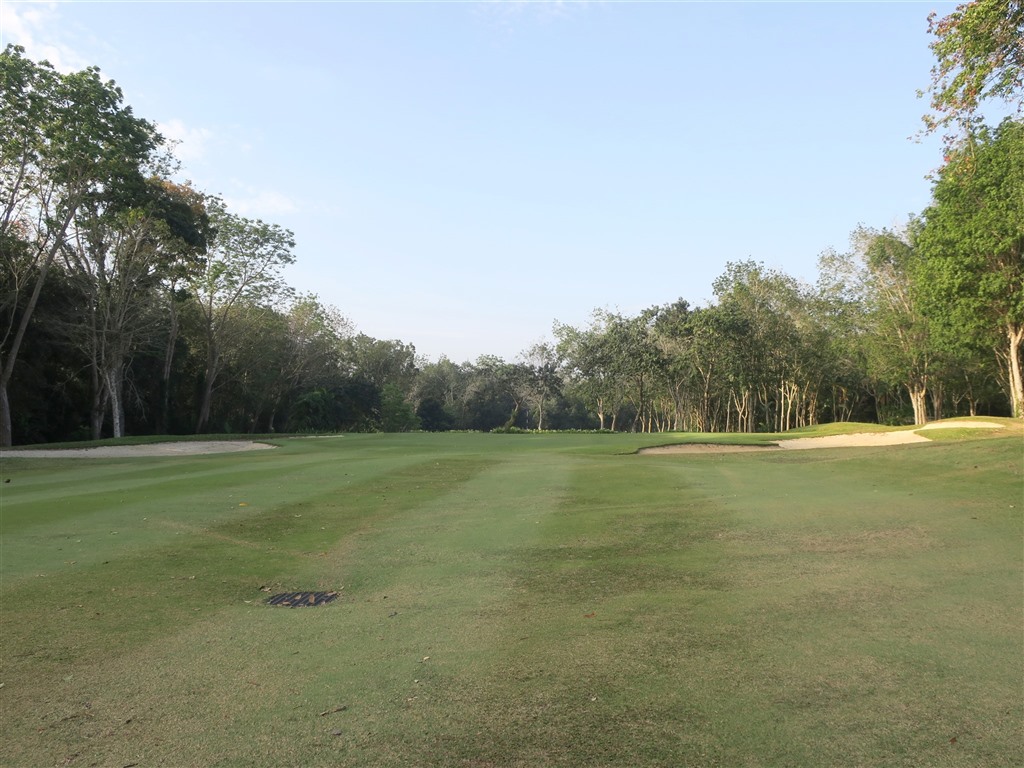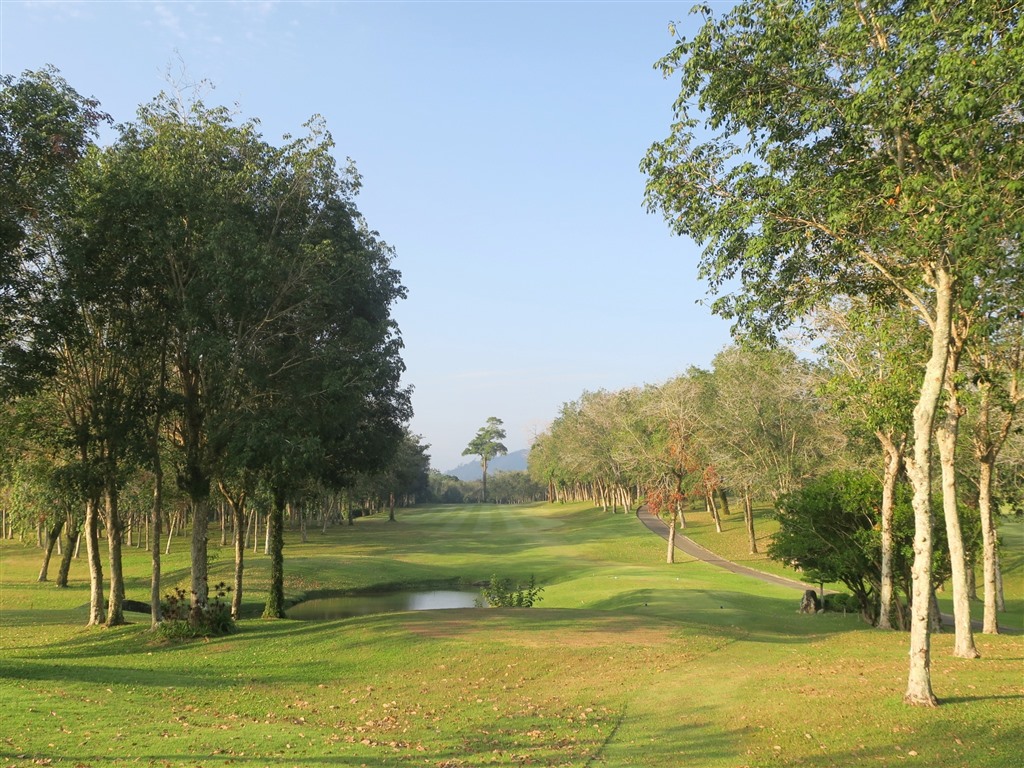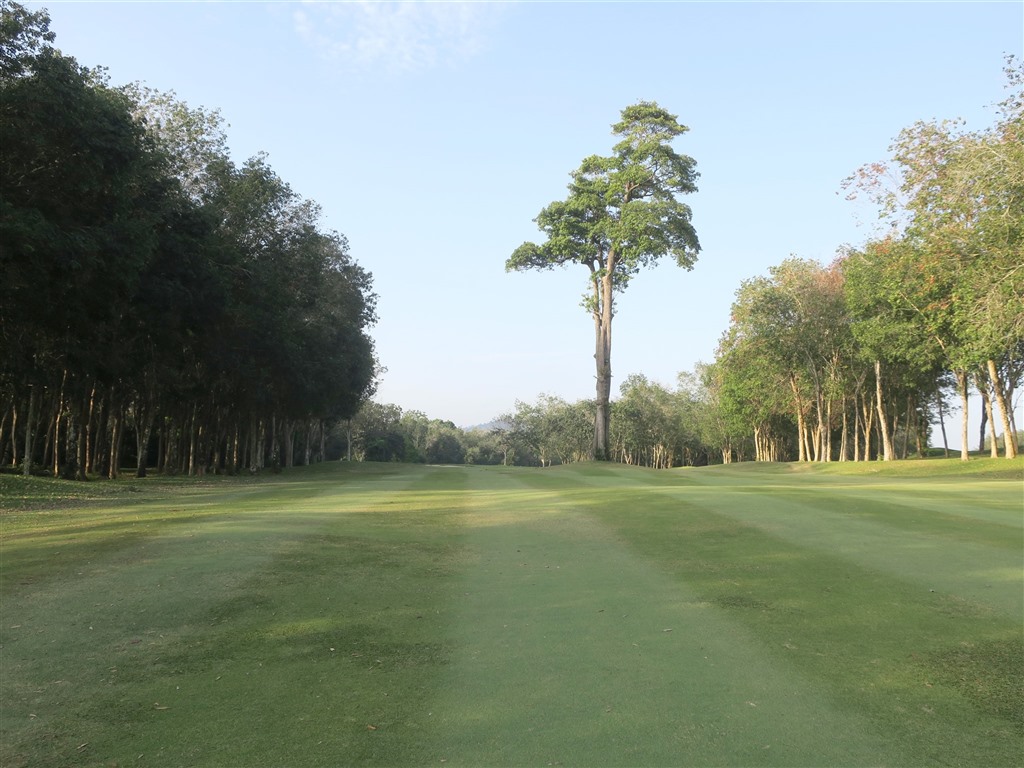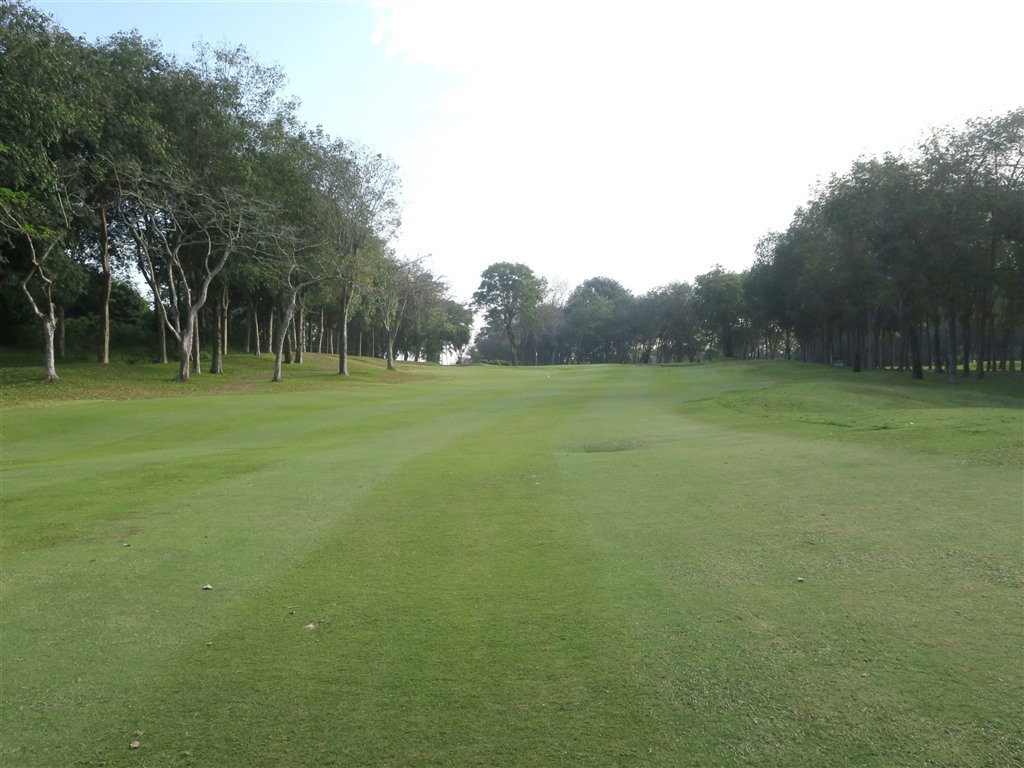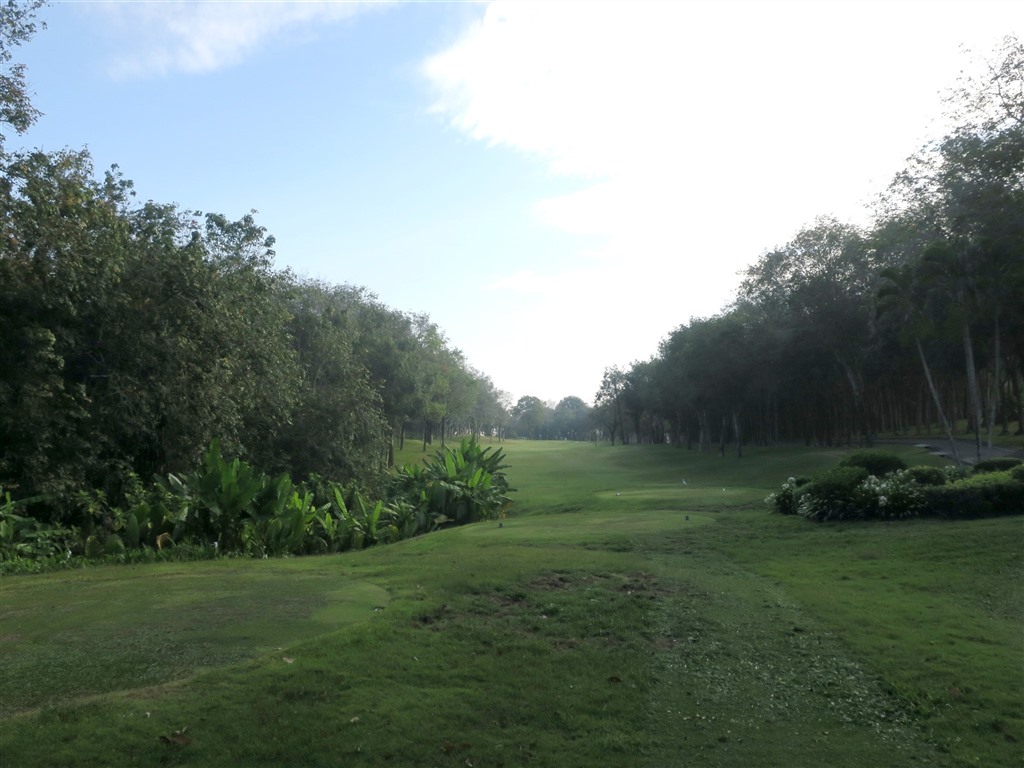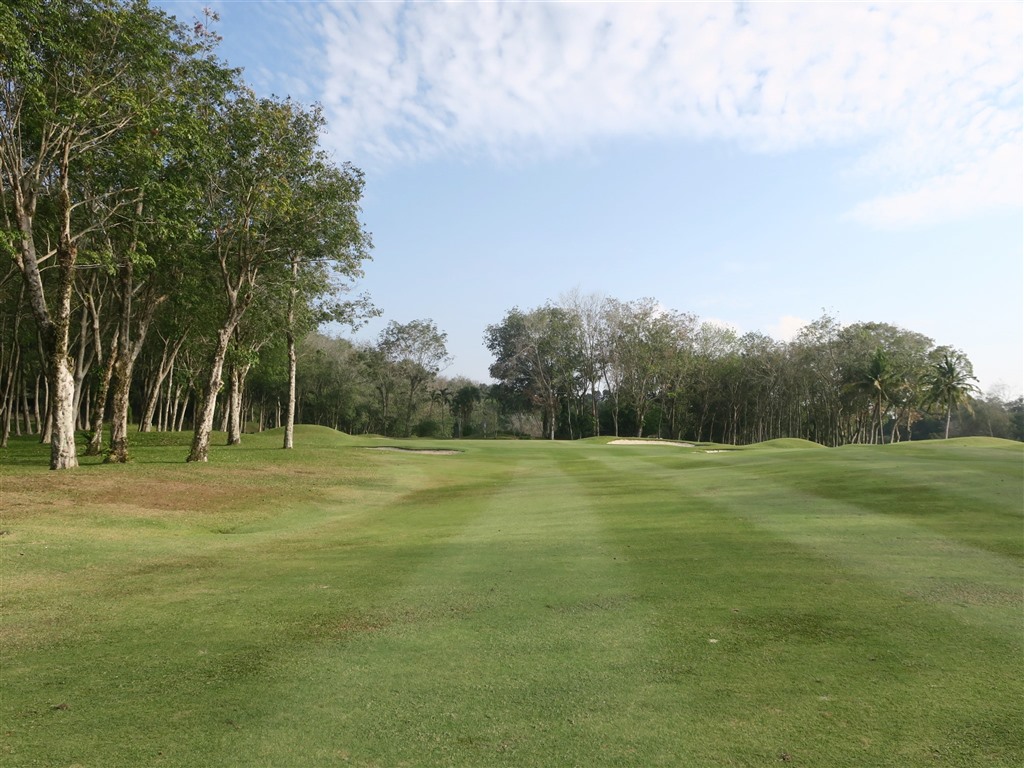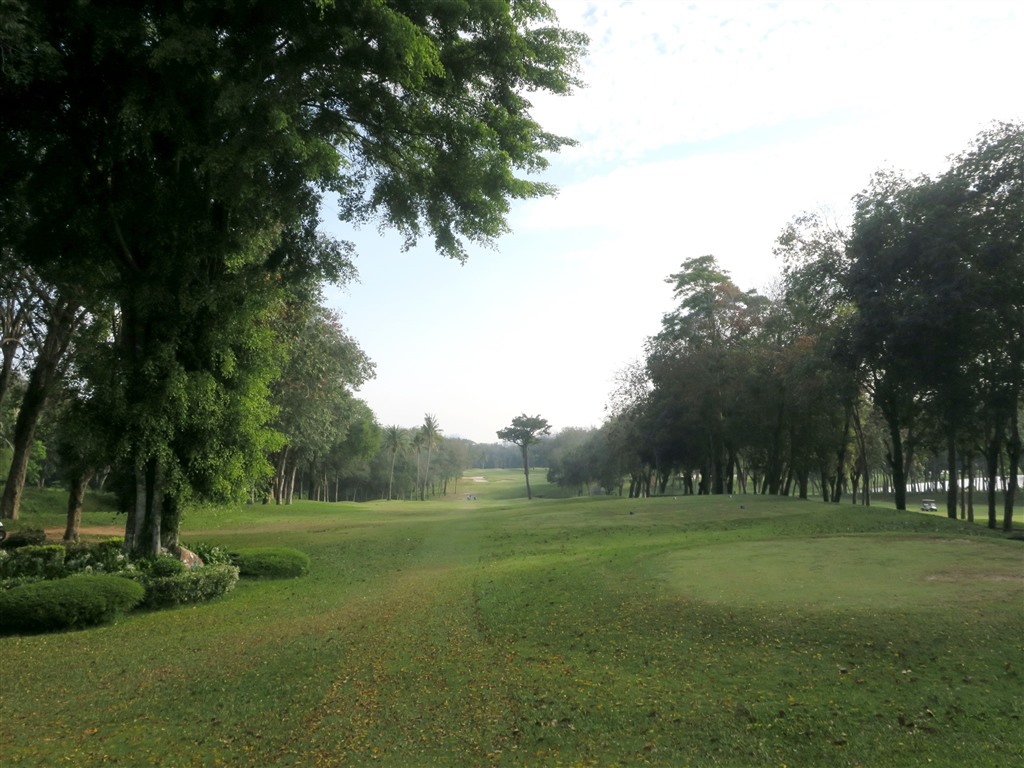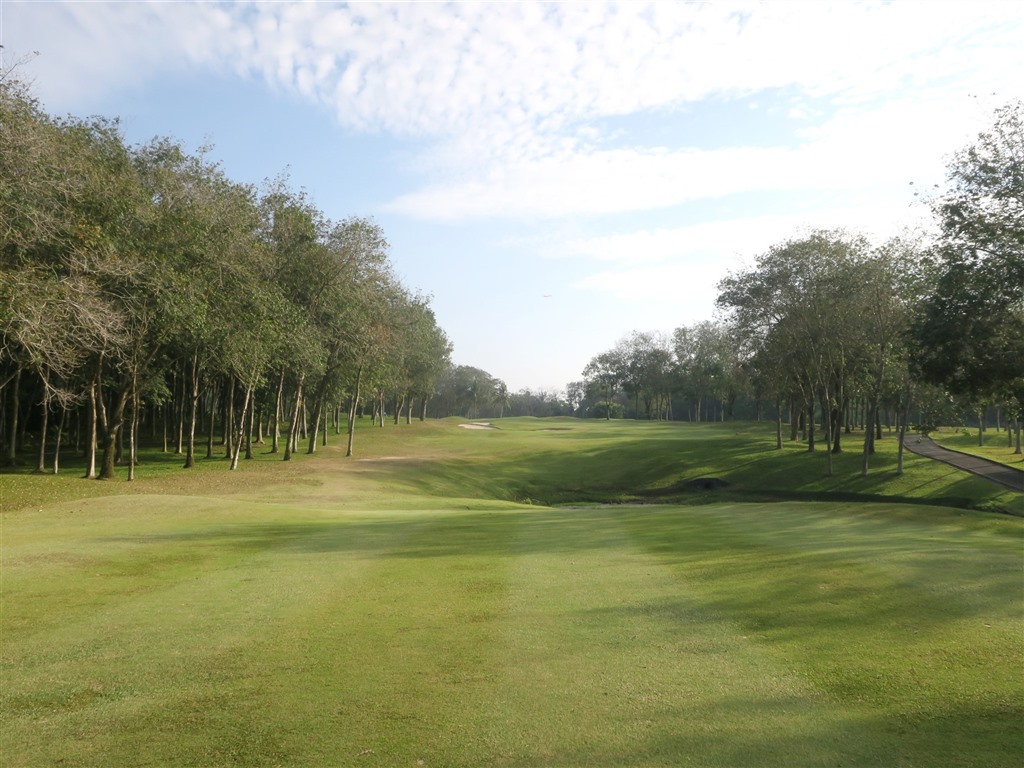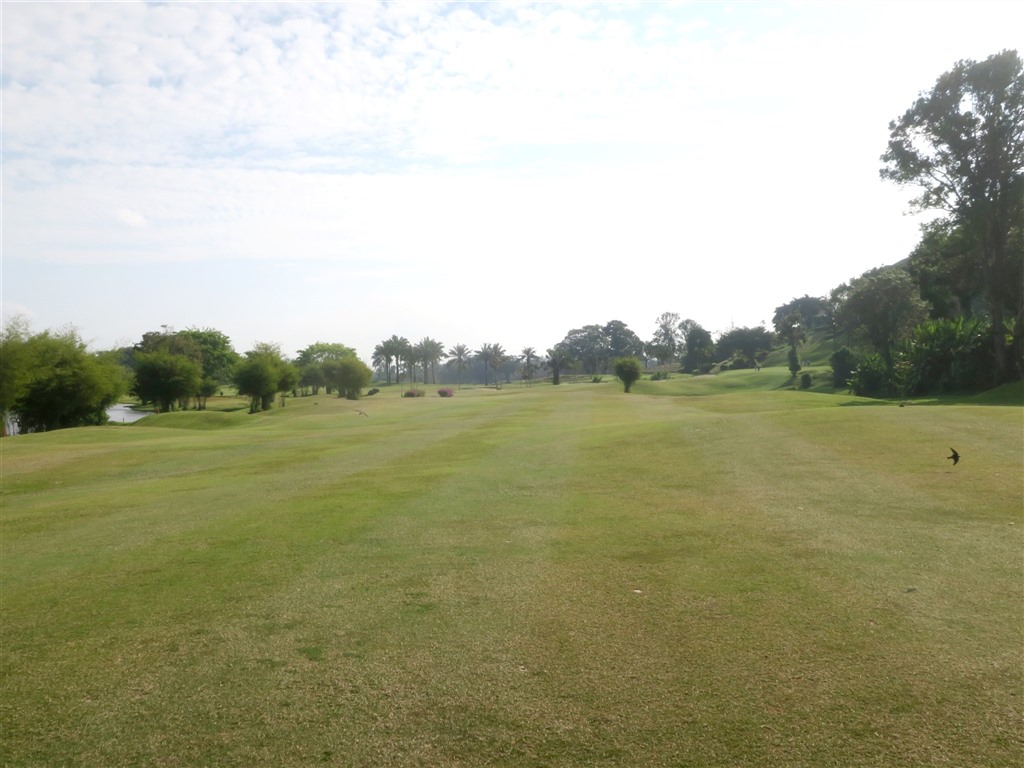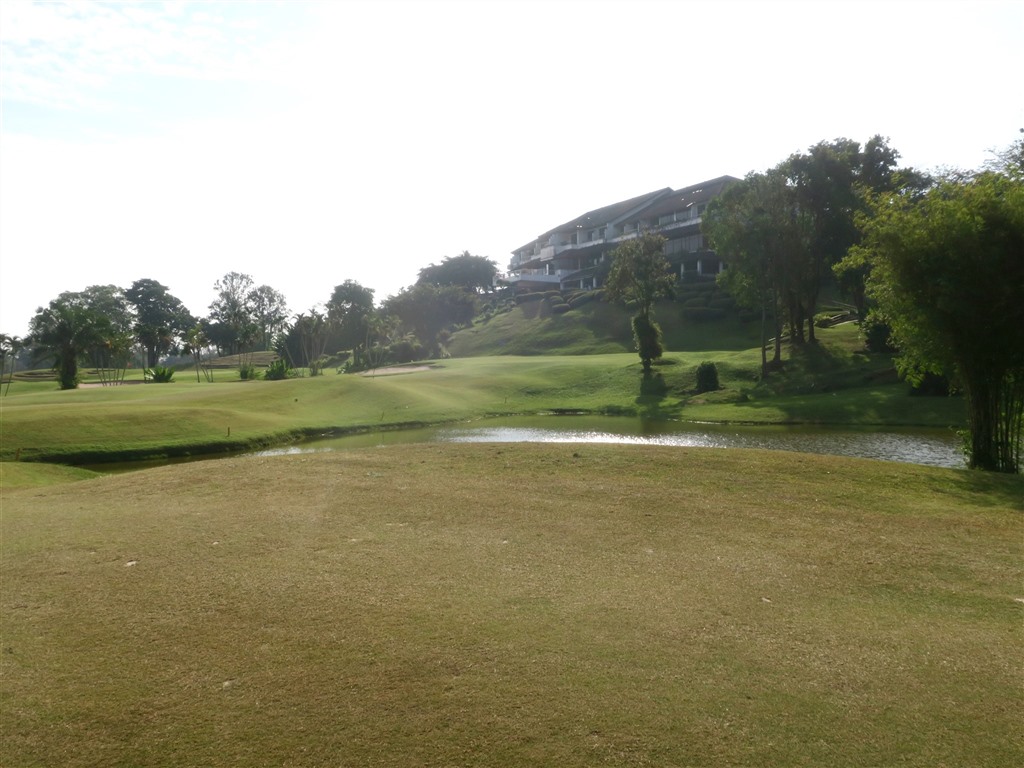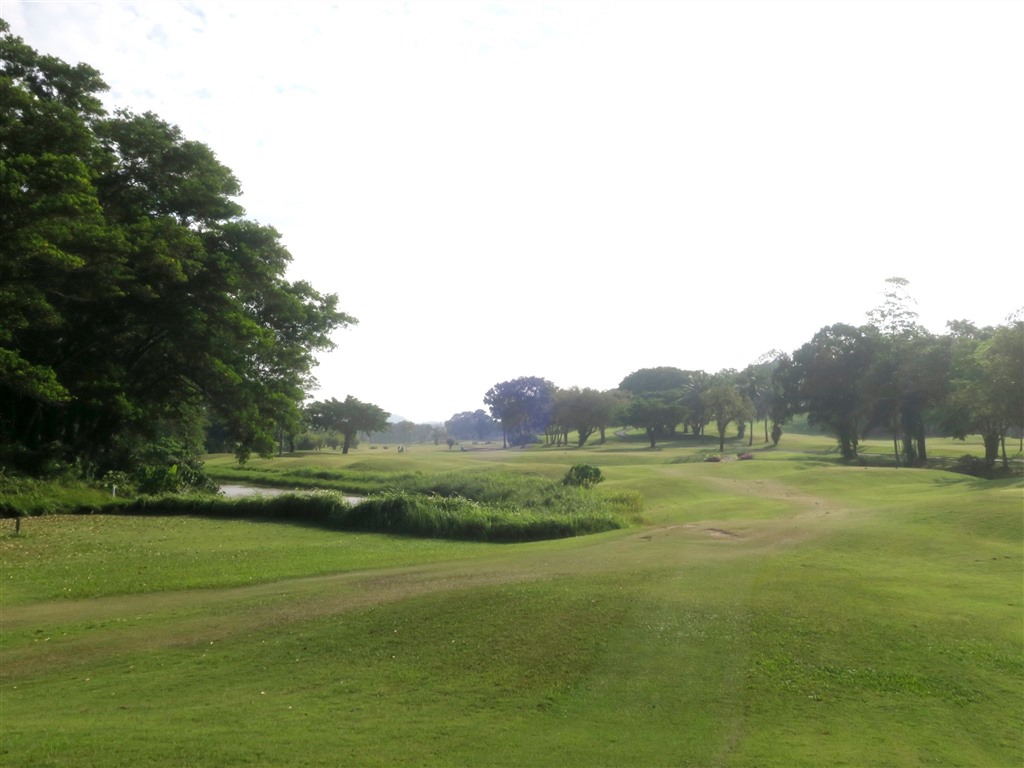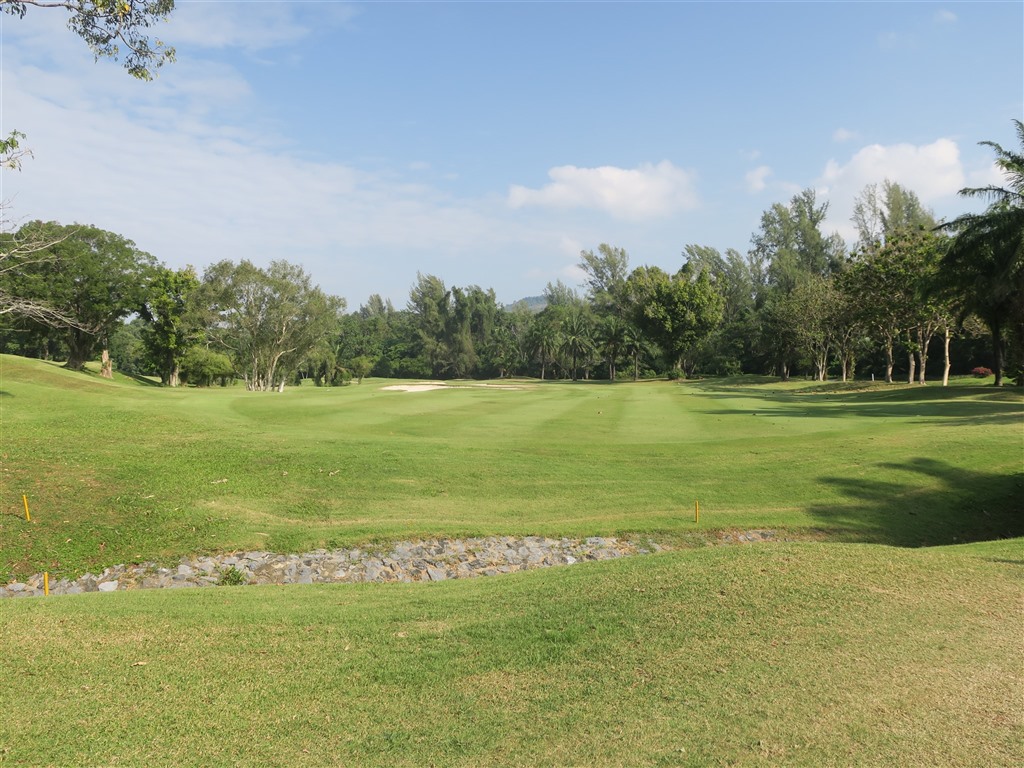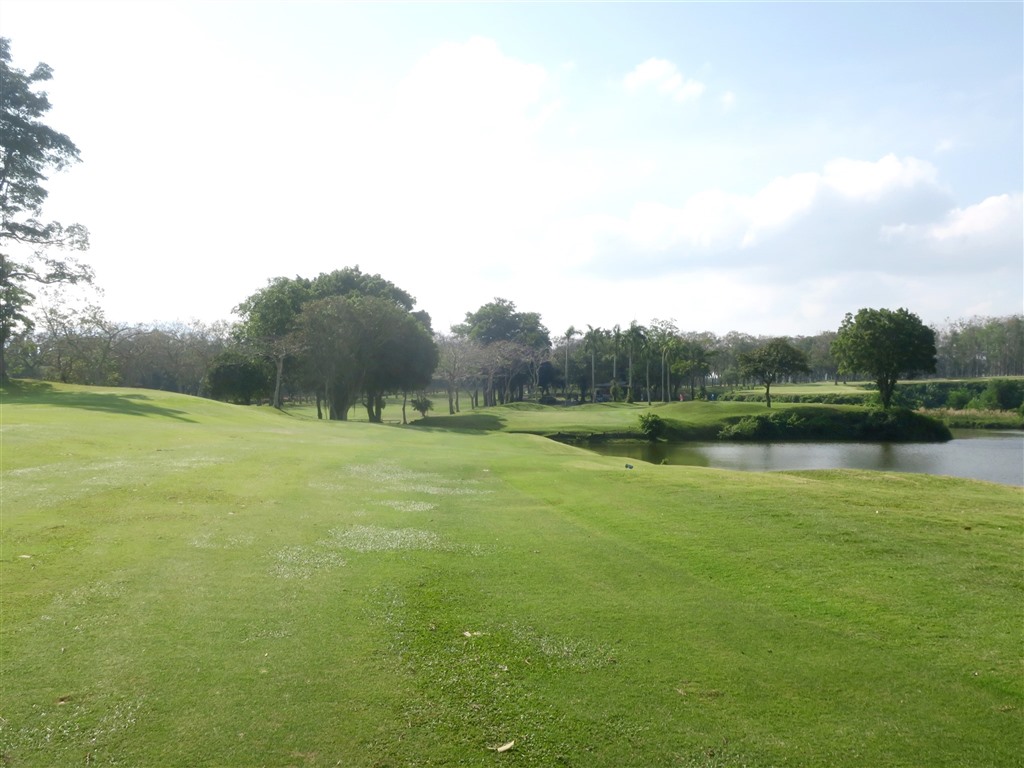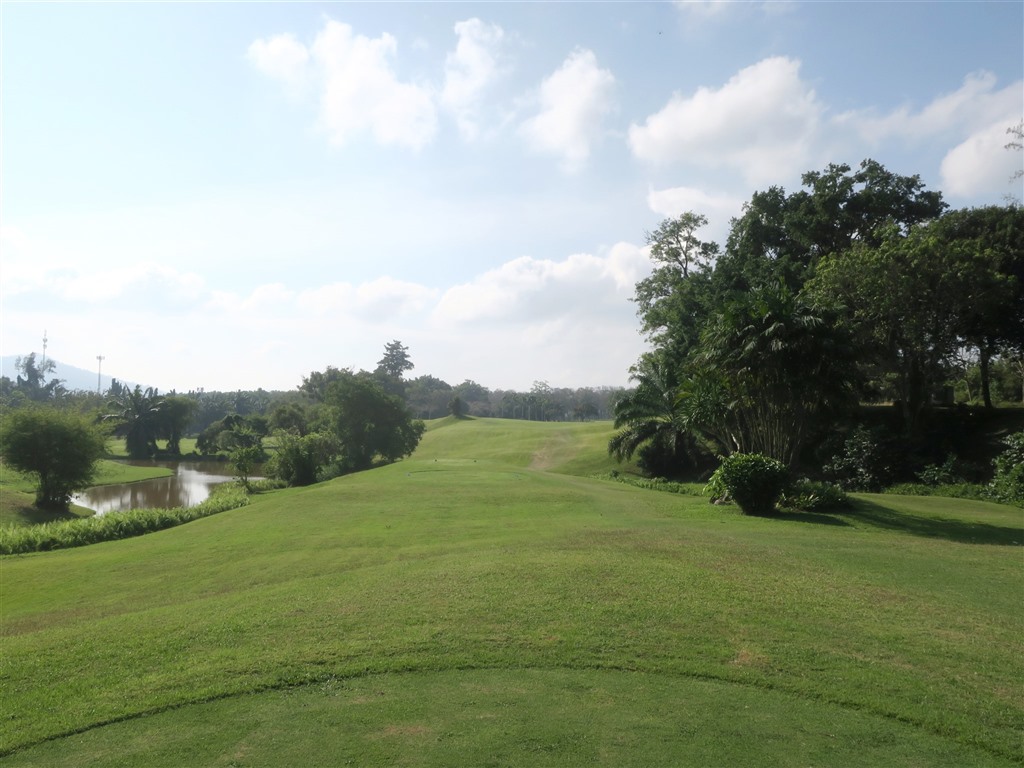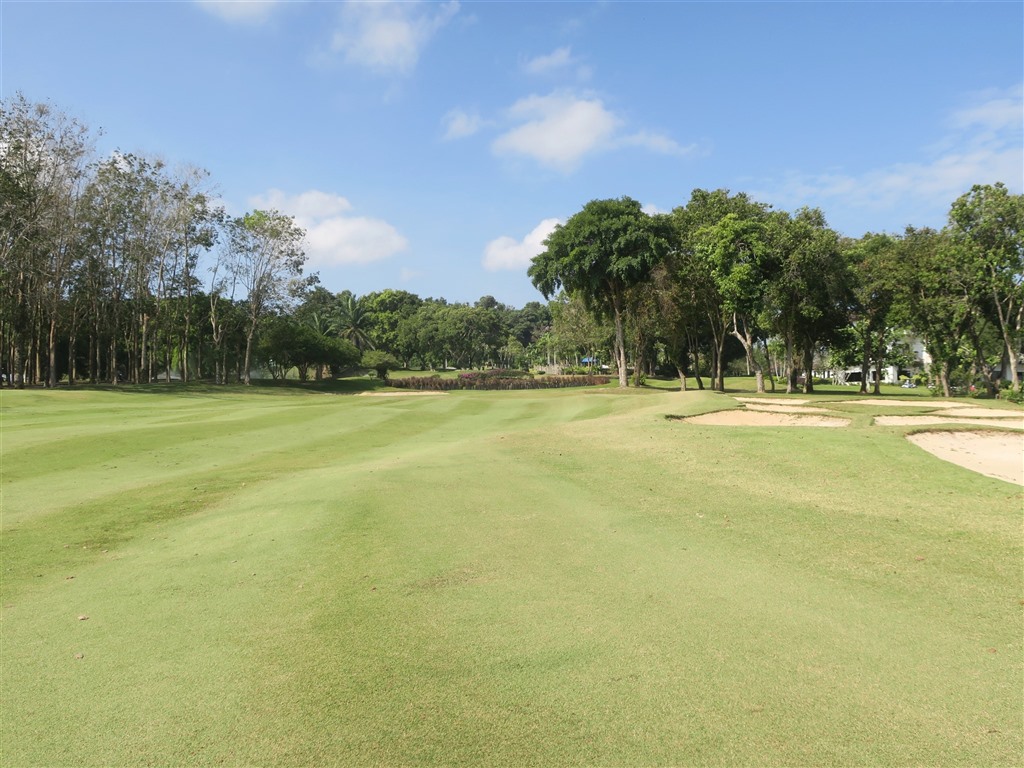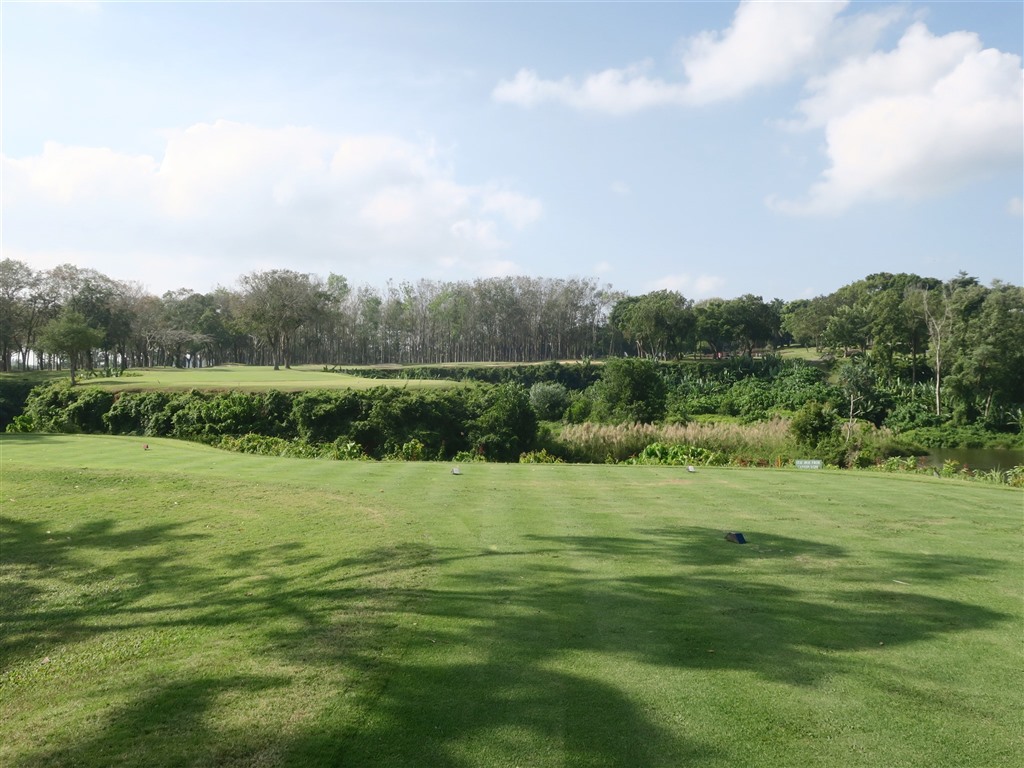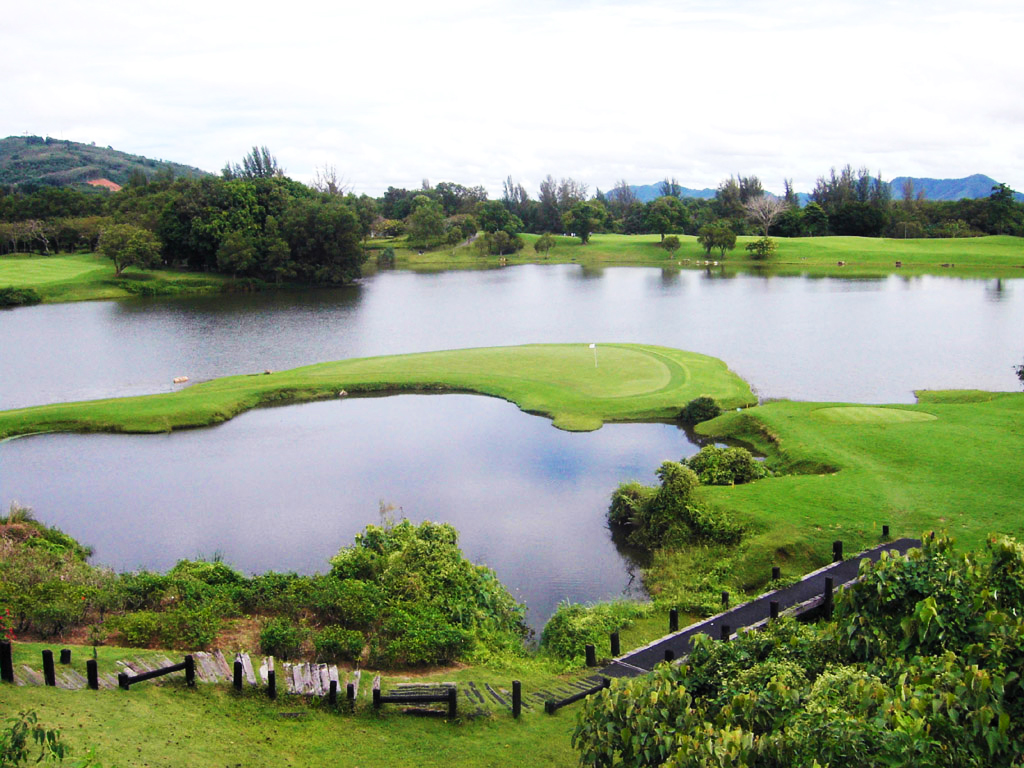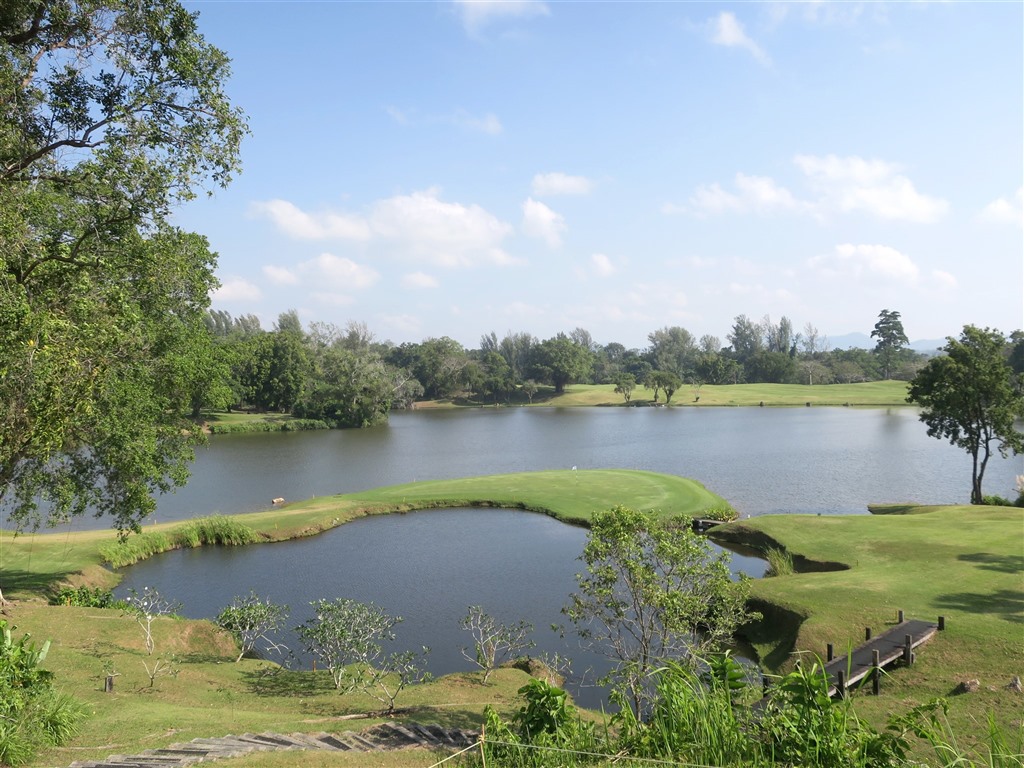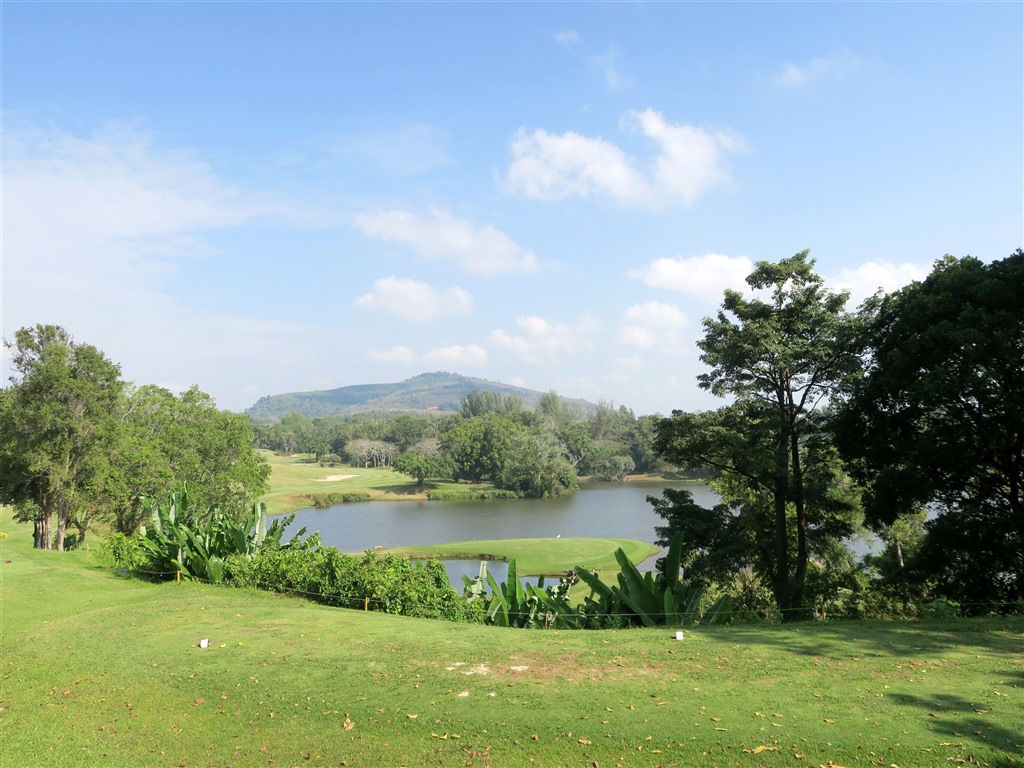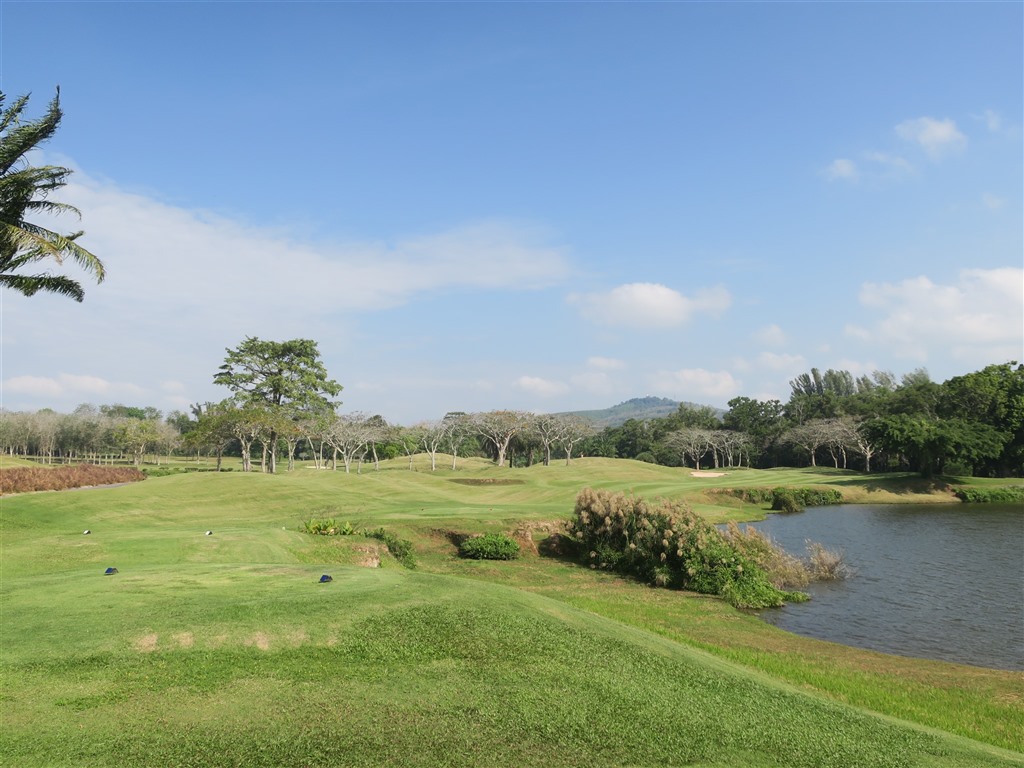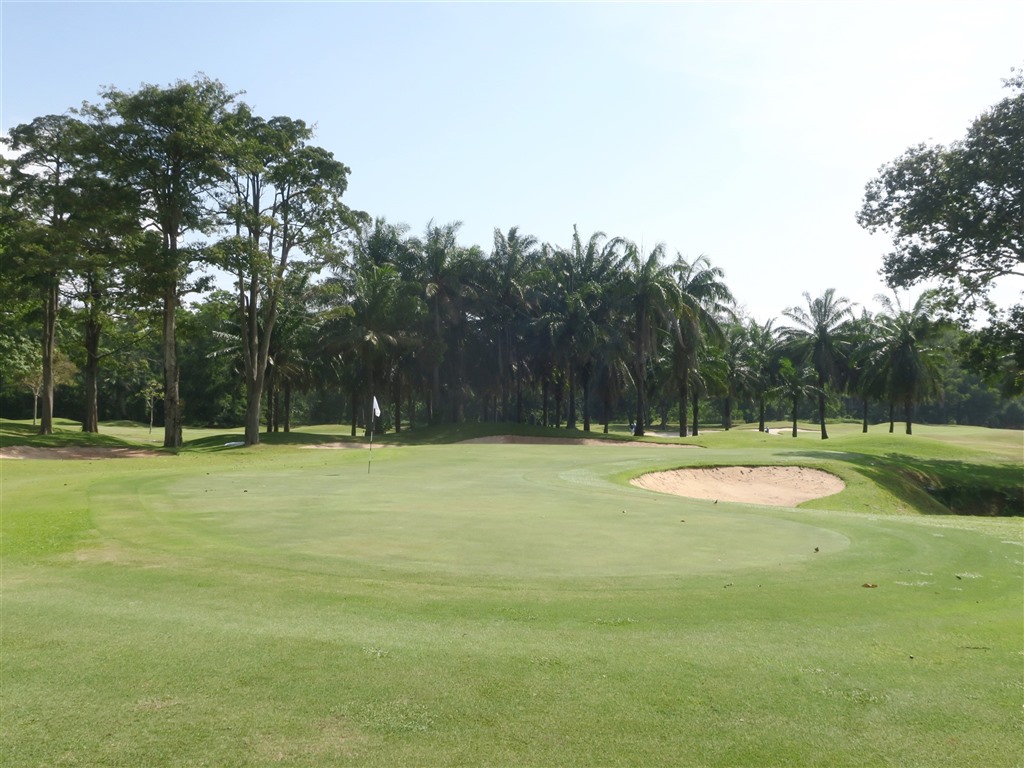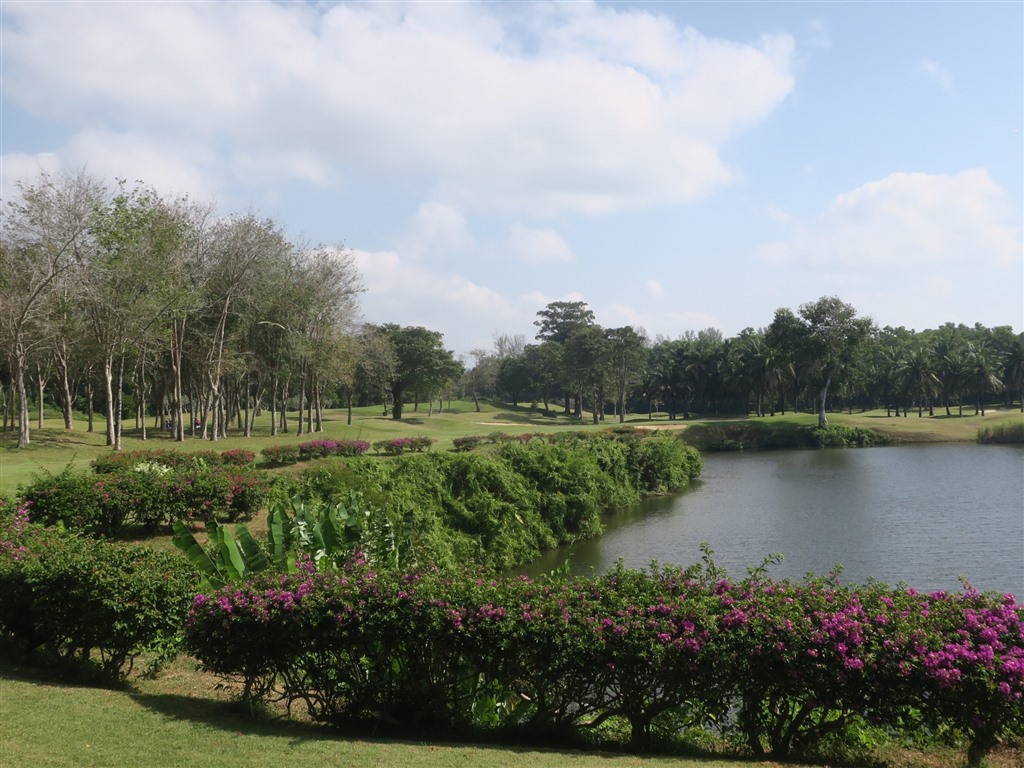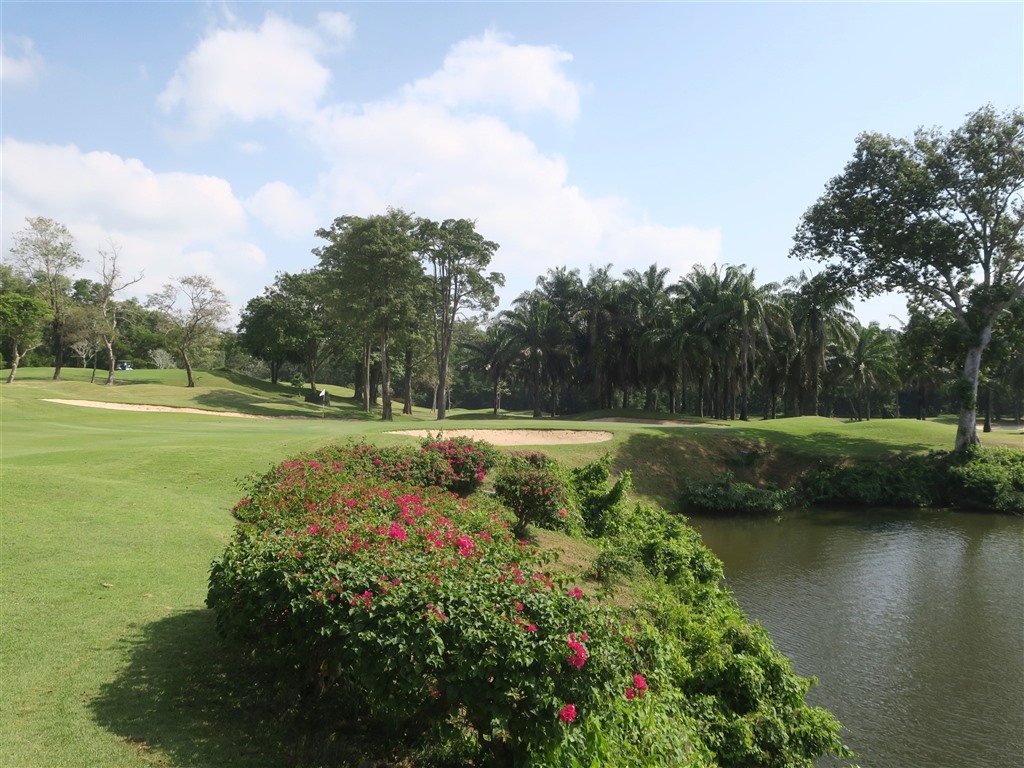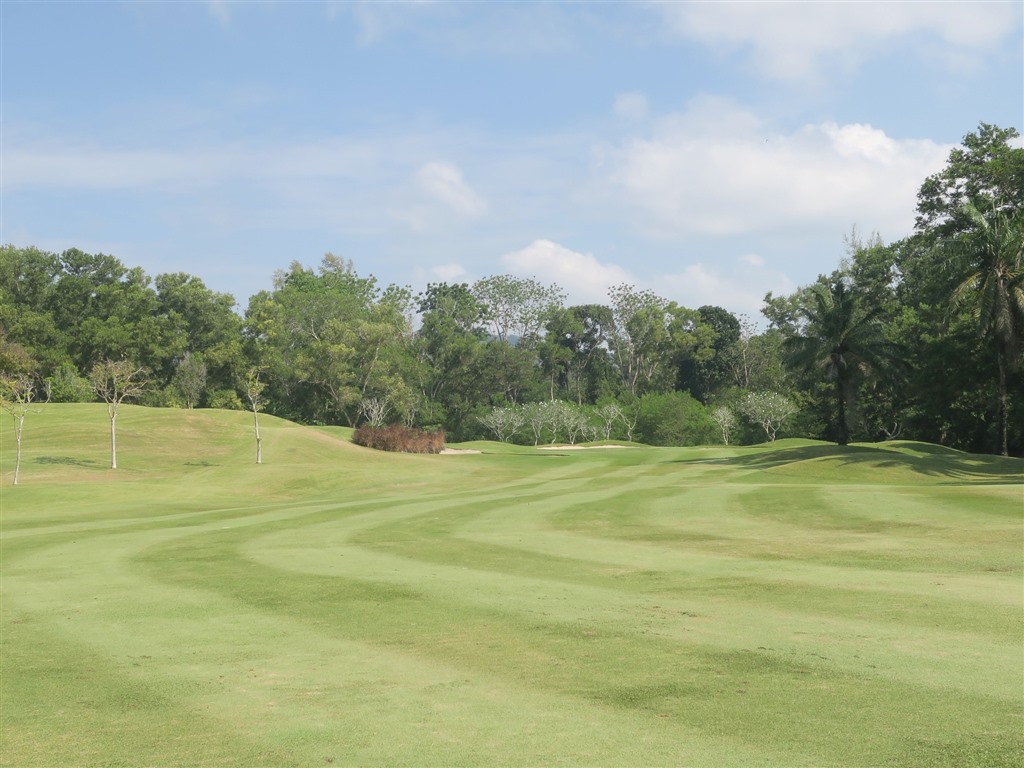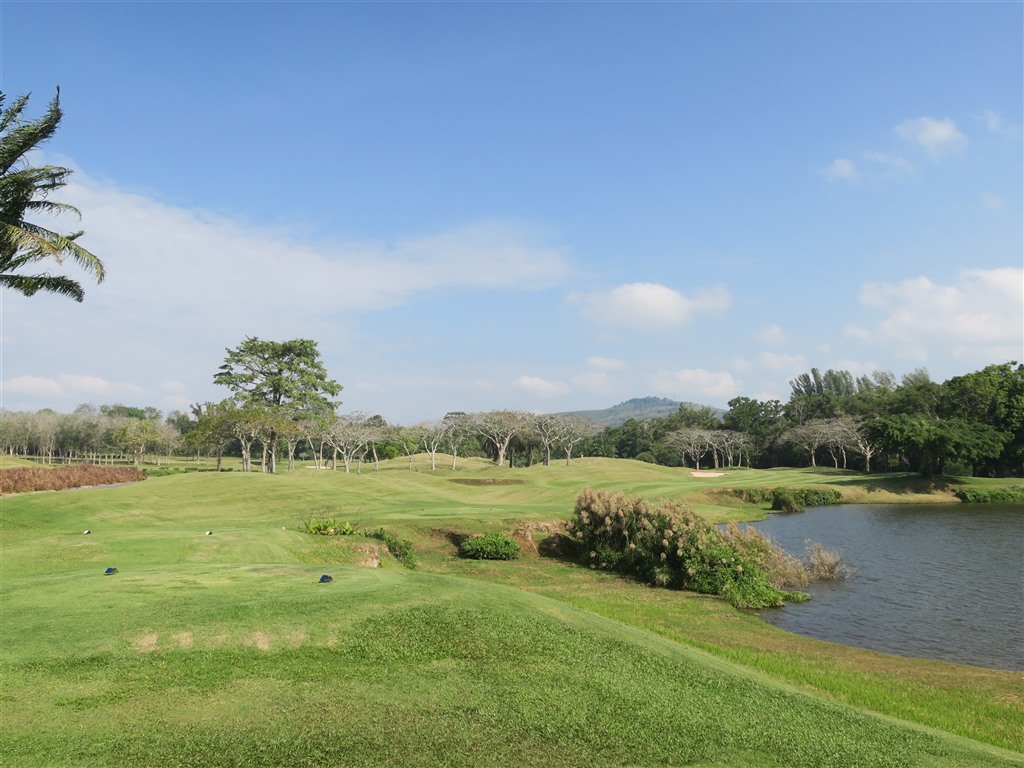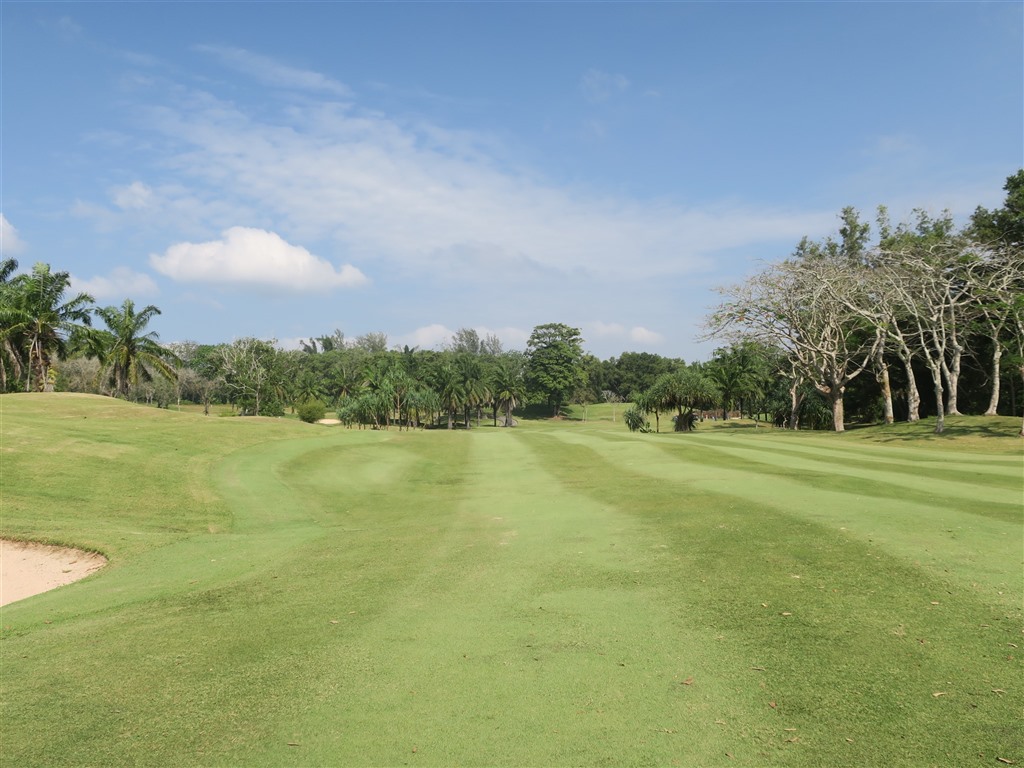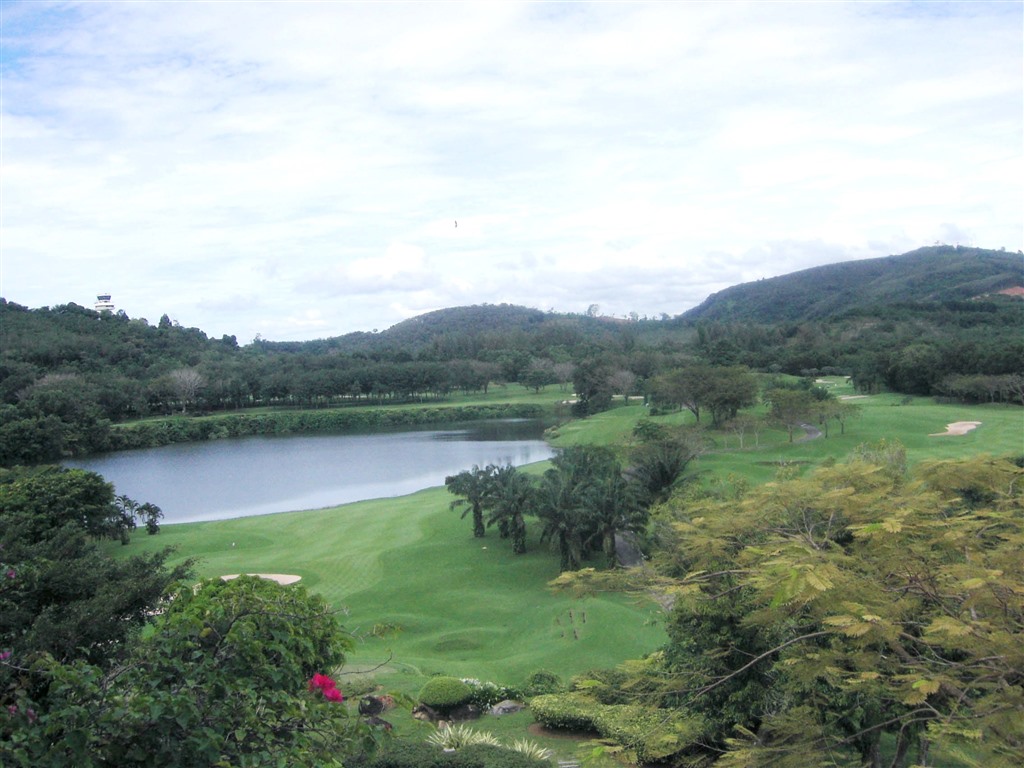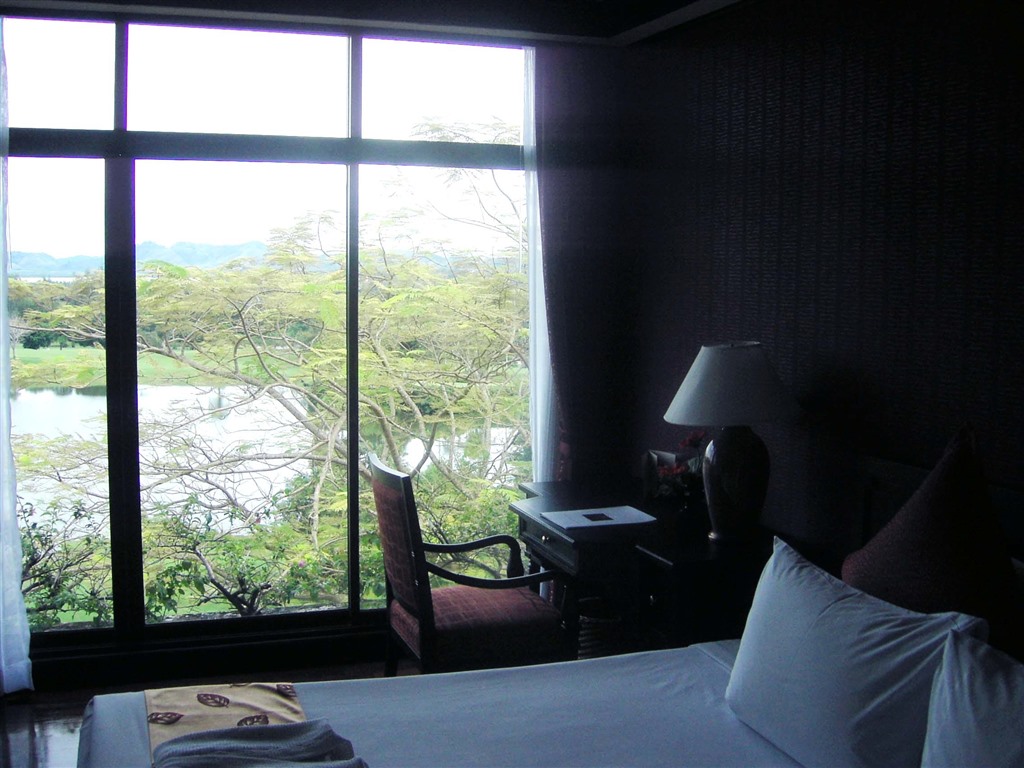ブルー キャニオン カントリークラブ (キャニオン コース)
The course is built on land that was once a tin mine and rubber plantation, and makes the most of the natural features of the course, such as two large ponds, creeks, trees, valleys, hills, and wetlands. It has a total of 36 holes, and consists of both the Canyon and Lakes courses. The Canyon course is highly regarded as one of the most representative courses in Asia. It is an extremely majestic course with many ups and downs, and is designed for advanced players. The dynamic scenery of the ponds and creeks as water hazards among the exposed rock faces of the mountains is also impressive. Each shot requires accurate shots. This is because the natural hazards waiting in front are strategically placed to be magnificent. Of the 18 holes, 10 are water hazards and a total of 80 bunkers are placed throughout the course. Each hole is in harmony with nature, very beautiful, and completely separated by rubber forests and ponds. There are holes that go through the rainforest and strategic holes with good views involving water, so there is a change in style. Not only are there uphill and downhill shots, but there are also many dogleg holes and undulating greens. International tournaments are often held here. The winners of the "Johnnie Walker Classic" on the European Men's Tour, which has been held three times in the past, were Greg Norman in 1994 and Tiger Woods in 1998. It was also held in 2007. Previously, you could only walk with a caddy, but now you can use a cart. You can use the cart not only on the cart path, but also on the fairway. Personally, I like playing on foot, but playing in Thailand is hot all year round, so having a cart would make playing even more enjoyable.
data
| location | Check on MAP |
| Course Leader | 7,179 yards |
| Course Rate | 74.8 |
| designer | Yoshikazu Kato |
| open | 1991 |
| Caddy | can be |
| Golf Cart | Yes (Fairway access available) |
| Driving Range | can be |
evaluation
| comprehensive evaluation | 5.05 ★★★★★ |
| Layout | 6 ★★★★★★ |
| Difficulty | 5 ★★★★★ |
| Green Condition | 4 ★★★★☆ |
| Fairway Condition | 4 ★★★★☆ |
| Sculptural beauty and scenery | 5 ★★★★★ |
| Satisfaction | 5 ★★★★★ |
Course Introduction
A straight and tough middle course. Large trees are on both sides of the narrow fairway, making it difficult to make a mistake on either the first or second shot. On the second shot, a large tree in the middle of the fairway in front of the green becomes a stymy, and the player's skill is tested on how to overcome the tree. This tree is called a sacred tree by the locals, and it is said that if you hit it with your ball, you will become a better golfer (the opposite idea to that in Japan). Bunkers are placed in front of the green and on both sides, and the green slopes to the left as it receives the stymy.
A slightly uphill, almost straight middle course. There is a hazard on the right side for the tee shot, so it is best to attack from the left. Hitting over the green is a no-no, as it will soon lead into the woods. There are huge bunkers in front of the green and on the right side, so an accurate second shot is required, which makes this a challenging course. There is also a bunker at the back of the green, which is long horizontally and slopes sharply to the right.
It's a difficult long course that starts almost straight from the tee, then curves to the left about 100 yards before the green. Both sides of the fairway are guarded by trees, and the landing area is narrow for both the tee shot and the second shot. The tee shot is a gentle downhill shot, and the second shot requires a shot over a small pond from a left-foot downhill lie. It's also very difficult, as you have to hit the shot to the right side of the fairway. If your second shot goes to the left side of the fairway, the trees in front will block your third shot, making it impossible to aim for the green.
It's straight up to the 460-yard point, but for the next 100 yards it curves at a right angle to the right. The best route for the tee shot is to the left of the palm tree in front. There are water hazards on the left side for the tee shot and on both sides for the second shot, and the landing area for the second shot is narrow. The third shot is an uphill shot over water, making it difficult to judge the distance. The two-tiered green with a steep step can leave tough putts depending on where you land.
A long, long shot that curves left from the second point. The tee shot is slightly downhill, and the best spot is on the right side of the fairway, but there is a bunker at that exact spot, which is very effective. Long hitters should be careful, as the ball may fly into the creek that crosses the fairway. The long green is 50 yards long, with a creek running around it. The green is a gently sloping, two-tiered green that is long and narrow. The green is not very wide, so if you try to force it, you will be caught by the ponds and bunkers on either side of the green.
A middle hole that curves almost at a right angle and has a strong dogleg to the right. The tee shot is over a cliff and a valley, and you need to carry the ball 220 to 240 yards to get over the valley. If you use an iron, it is difficult because the landing area is narrow, and you are left with a second shot of more than 210 yards. To hit safely, it is better to carve the ball next to the tree at the corner, although it will be difficult to make par. The straight distance is 310 yards, and you have to get over the tall trees between the green and the cliff, but Tiger Woods is said to have hit it on the left edge of the green in one shot in a professional tournament. To be able to hit a high carry ball of 300 yards with no run at a crucial moment requires incredible toughness not only in technique but also mental toughness. The green is long horizontally and guarded by three bunkers.
This downhill par 3 hole is famous for its artistic beauty. The island green is not the usual circular shape, but a boomerang shape. Because it is a fairly downhill shot, the ball stays there for a long time and is easily affected by the wind. Moreover, the green is narrow, making it a difficult hole to land the ball on.
A long, double dogleg that curves first left and then right. The tee shot is over a pond, and you have to worry about the bunker on the left and the OB on the right. If your tee shot is bad, it may be a good idea to place your second shot just in front of the creek that crosses the fairway. The relatively small green is long and guarded by three bunkers and a hazard on the right side.
A beautiful but extremely difficult short course. The green is in the shape of a " " and extends to the right, encircling the cliff. When the pin is at the far right, a carry of 230 yards is required to get over the cliff, and since there is only a 20-yard gap between the cliff and the bunker at the back, even top pros don't aim for the pin, but rather the far left side of the green. This hole was chosen as one of the world's best 500 holes in 2000 (latest edition) by the American Golf Magazine.
Trivia
10 minutes east from Phuket Airport. Visitors are allowed to play. There is a hotel attached to the hotel and it is in the same building as the clubhouse. If you are staying overnight, it is better to stay in a room on the course side.
It is ranked 6th in the Top 50 Thailand Courses of 2020 in the Top 100 Golf Courses (top100golfcourses.com). There are about 300 golf courses in Thailand. The only course in Japan designed by Yoshikazu Kato is The Southern Links GC, but other courses designed by Yoshikazu Kato in Thailand include Treasure Hill G&CC and Kabinburi SC. After designing the Canyon Course, Mr. Kato moved from Japan to Thailand because he was worried that the course would deteriorate if it was not properly maintained, as it was so well-made.

